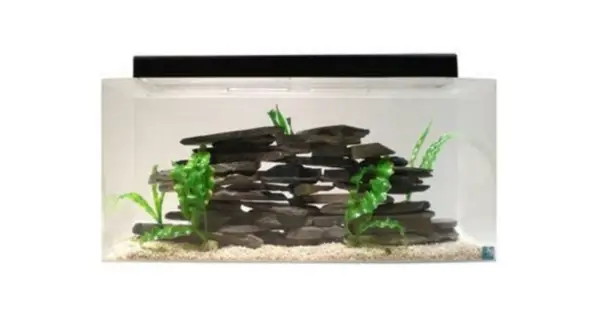The Golden Algae Eater is a suckermouth catfish from the Chinese Algae Eater family, also known by the latin name Gyrinocheilus aymonieri. Not only are these Algae Eaters very interesting and unique-looking, they are very beneficial to aquariums and help out a lot with your cleaning duties!
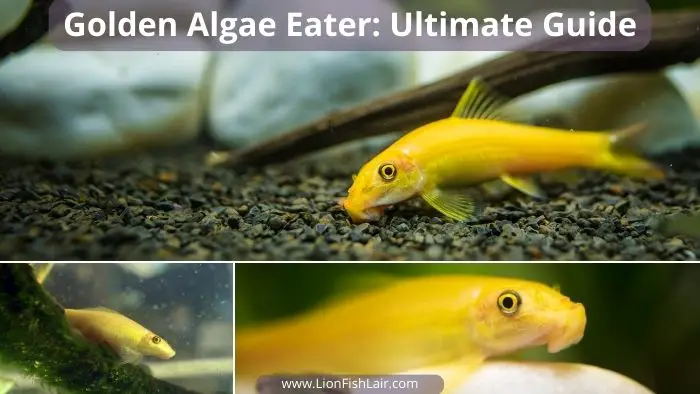
The yellow, golden-colored fish is thought to originally hail from Northern India, but they are more commonly farm-raised in South-East Asia, in particular Thailand. They live off of algae and algae wafers, and are therefore useful for fish tank owners in dealing with algae in their aquarium. When it comes to freshwater algae eaters, you won't find many better than this Golden catfish.
I created a video guide for the golden algae eater as well as this article, make sure to check it out below for a more visual guide:
Requirements and General Information
There are a number of requirements that are important to take into account when putting a Golden Algae Eater into a suitable fish tank.
Tank Requirements - Overview
- Temperatures between 21 - 26°C (70 - 79°F)
- Water between pH 6.8 and pH 7.4
- Plenty of available hiding spaces
- A cautious community
- Minimum of 30 Gallons (136 Liters) per fish
- An established tank with algae growth is preferred
- Live plants and driftwood are beneficial for varied algae growth
- Best kept in either a school of 6+ or just as a single fish
Below is the perfect aquarium for a golden algae eater to live a happy, healthy, and comfortable life in:
- This brilliant 30 gallon (113.5 liter) aquarium is the perfect size and fit for the golden algae eater.
- The dimensions are common for a rectangular 30 gallon tank, 36 inches (91 cm) L x 12 inches (30.5 cm) W x 16 inches (40.6 cm) H.
- SeaClear provides not only the tank, but also a reflector and electrical 24 inch (61 cm) light fixture, which works brilliantly.
- The aquarium is acrylic rather than glass, making it 17 times stronger as well as being only half the weight of a glass one. Oh, and did we mention that acrylic is actually clearer than glass?
- Acrylic aquariums are not only clearer and stronger than glass, but they are far less prone to chipping or cracking, making this option far safer for both children and pets.
Appearance and Behavior
It is important to know about any behavioral tendancies and also changes within a fish's appearance over time, and especially what can affect it. Let's take a look.
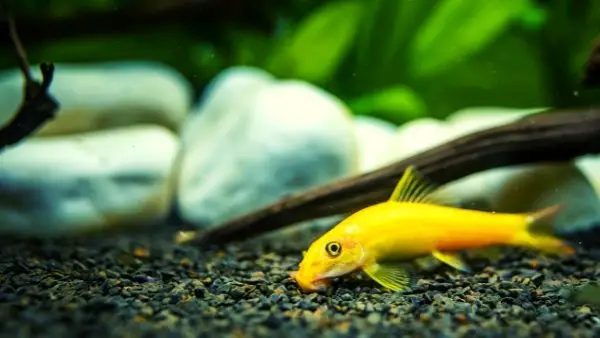
What do Golden Algae Eaters Look Like?
As mentioned earlier, Golden Algae Eaters exhibit a striking yellow/goldish coloration. This sets them apart from other freshwater tropical aquarium fish.
Their color can range from light yellow, to a deeper yellow/goldish coloration, depending on the conditions of the tank, the lighting, and their diet.
The fish typically exhibit their best coloration when kept in an aquarium with driftwood and live plants. This provides ideal conditions for varied algae growth.
Behavior
In general, Golden Algae Eaters are very easy to look after, making them good fish for beginners. However, they can show aggression to tank mates of a similar shape and size, so, keep reading to see what golden algae eater tank mates are suitable. They are far more social than other similar fish such as Plecos. They can however, be a little skittish at times, especially if you approach the tank too quickly or stick your hand into the water.
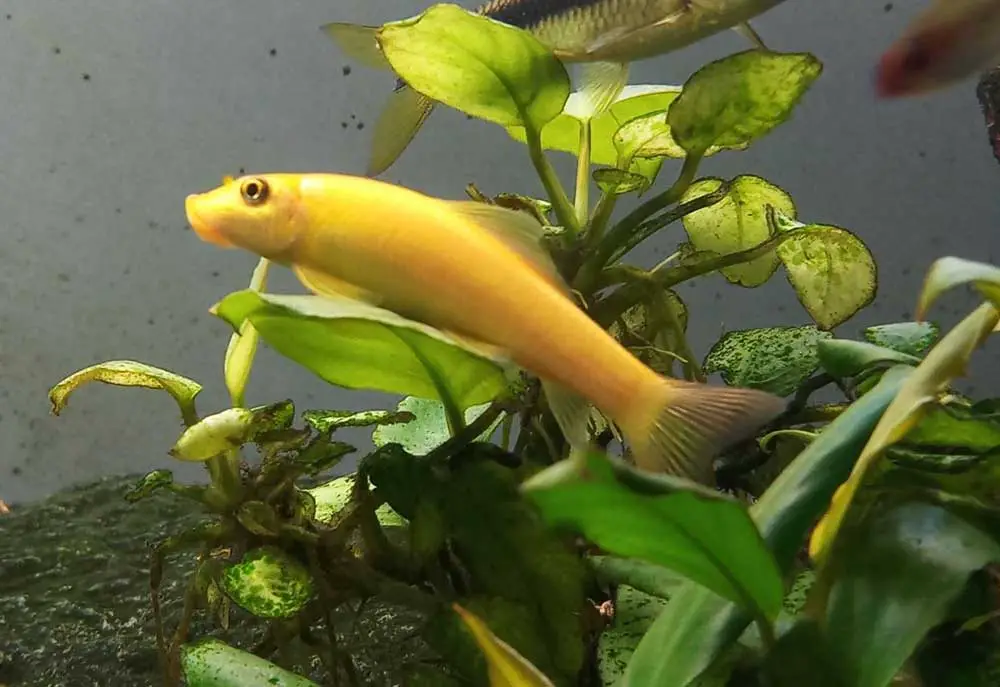
In situations such as these, they’ll more than likely dive into the nearest cave until you’ve taken a step back from the tank. Once you’ve backed up a little, they’ll soon come swimming out of their hiding place. Most of their time is spent in the lower parts of the tank, where they often attach themselves to surfaces around the aquarium to feed on algae.
Compatibility With Other Fish
Golden Algae Eaters are semi-aggressive fish. When kept as a single fish in a community tank, they get along with the vast majority of other fish, especially at a young age.
However, they can be aggressive towards fish that are the same shape as them such as Silver Sharks and Red Tailed Sharks. They also shouldn’t be kept with large, slow-moving tank mates that they’d be likely to chase. A couple of examples of these are Angelfish and Discus fish.
Tank Mates
The best potential tank mates are usually small, speedy species that can easily swim away should they need to. You could try Tiger Barbs, Mollies, Swordtails, Clown Loaches, and Cherry Barbs.
Below is an awesome and helpful graphic displaying each of our top golden algae eater tank mates with their requirements and general information. Not only are the fish compatible with golden algae eaters, but they complement eachother extremely well.
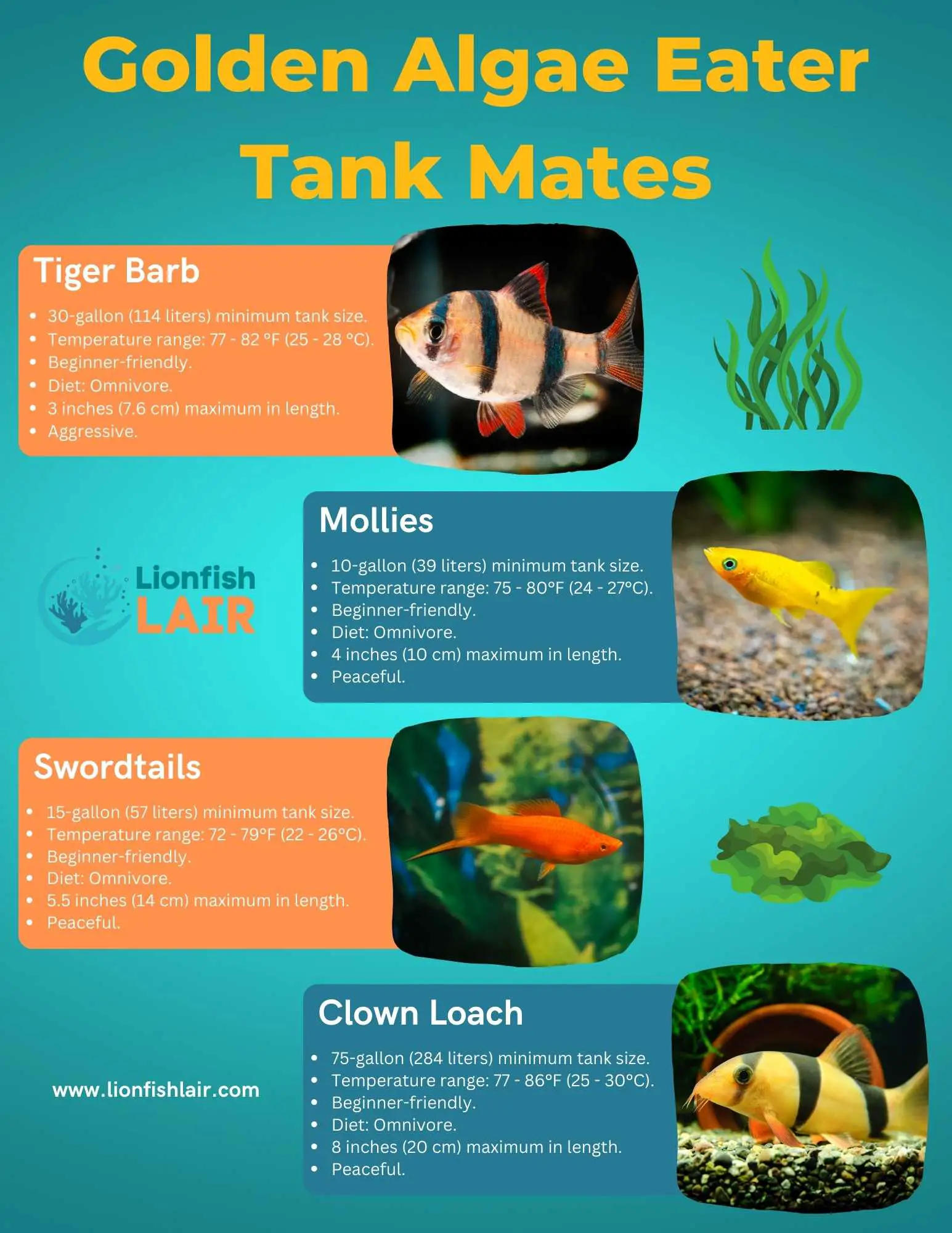
You can keep Golden Algae Eaters both on their own and in groups. However, it’s only beneficial to keep younger species in groups, as larger species can become territory-depended.
Size
How big does a golden algae eater get? It’s worth remembering that the maximum size of the golden algae eater is 10-12 inches (25-30cm) in length!
Therefore, with this in mind, caution should be taken when buying them. As the fish become larger and grow to full-size, they can dislodge plants and rocks within your aquarium, especially if the tank’s on the small side.
Unlike Plecos, another well-known algae eater, Golden Algae Eaters are less likely to damage plants, they’ll just look to eat the algae off of them.
Diet and Feeding
Golden Algae Eaters are predominantly herbivores, with the majority of their diet being the algae that grows on rocks, plants and grass, or algae wafers. Therefore, they’ll mainly eat the algae that naturally accumulates within your aquarium.
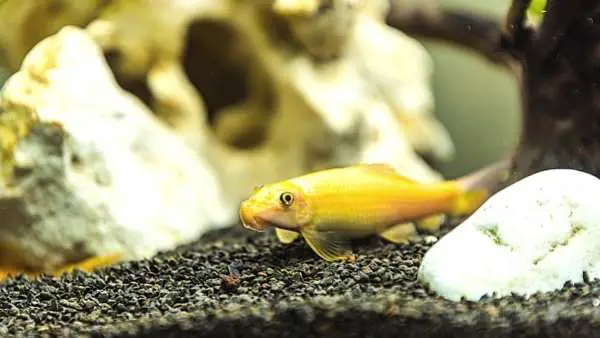
Feeding Your Golden Algae Eater
What do golden algae eat? It is a good idea to feed them different types of food to keep them in good shape. Quality dry food in the shape of pellets are often the best option as they reach the bottom of the tank quickly and maintain their structure for a good amount of time.
This ensures that your Golden Algae Eater will easily be able to scrape slowly softening food which contains high-quality nutrients such as spirulina. It’s important to closely monitor how much you feed the fish. Bearing in mind that if the fish is either not hungry or overfed, they may stop eating algae, which would result in a dirtier fish tank.
They should be fed every day, but if you see some green algae in the tank and they’re not eating it, there’s no harm in starving them for a short period of time.
Breeding and Gender
This is a difficult species to breed with only a few cases of it being achieved in home aquariums.
Breeding
Those that have proved successful have used large setups with a significant amount of vegetation, which not only provides extra space, but also closely resembles their natural wild environment. Needless to say, you’ll also need a group containing males and females.

Raising the temperature of the water is a commonly used method to trigger spawning in many species. So, you could try this to help with the breeding of the fish. For the best effect, slowly raise the temperature by 3°F each day until you reach 80°F (26°C). This will replicate the spawning temperatures at the end of spring.
Gender differences
It’s difficult to tell the difference between males and females with both growing to a similar size and both exhibiting similar colors. Adults female can however, be a little fatter and look rounder than males. Another distinguishing feature is the fact that reproductive males develop a breeding horn on their head.
Golden Algae Eater - Free Downloadable PDF
There are so many awesome things to consider when it comes to these helpful golden guys, which is why we have created a more visual care sheet for you to use as a reference whenever you need to remind yourself on certain requirements of the golden algae eater.
Frequently Asked Questions
We have gone through some of the most impotant FAQs regarding the Golden Algae Eater and have tried to answer them as comprehensively as possible.
How can you tell the difference between a Siamese Algae Eater and a Chinese Algae Eater?
There’s a fair amount of difference between the two species. Firstly, Siamese Algae Eaters look more like a standard fish rather than an elongated one. Their appearance is somewhat shark-like, with many people adding them to their freshwater “shark tanks” full of other fish exhibiting a similar look.
Another notable difference is that the black stripe running down the body of a Chinese Algae Eater is much more rugged than the black stripe of a Siamese Algae Eater. This isn’t to say that a fish store won’t still confuse the two. Identifying the differences remains a challenge, so beware of this pitfall when buying either. It is also important to consider that not all algae eating fish are freshwater, in fact, there are many saltwater algae eaters, so make sure you get the right one and have the required tank set up.
Do Golden Algae Eaters eat shrimp?
While they generally eat algae and not a lot else when they’re young, Golden Algae Eaters will eat almost anything they can get their mouths around as they grow older. They also become increasingly more aggressive with age. So, it’s safe to say that a shrimp will be at risk in the same tank. Even the more popular Ghost Shrimps are at serious risk with these fish.
What Size Tank do Golden Algae Eaters Need?
Despite not being huge fish, and not particularly active swimmers, these guys still need a minimum tank size of 30 gallons (113.5 liters). This is so that they can establish an area of the tank where they will feel safe and comfortable to begin working away on algae and other bacterias that they enjoy feeding off.
Final thoughts
In summary, Golden Algae Eaters are a relatively straightforward species to care for. The only major concern is their aggression, which becomes worse with age.
So, if you choose the wrong tank mates, there’s every possibility that they would attack them. However, if you plan your aquarium well and choose suitable fish to join your Golden Algae Eater, you shouldn’t experience any problems.
They’ll also prove incredibly useful for algae control, making the job of cleaning your tank much easier.

